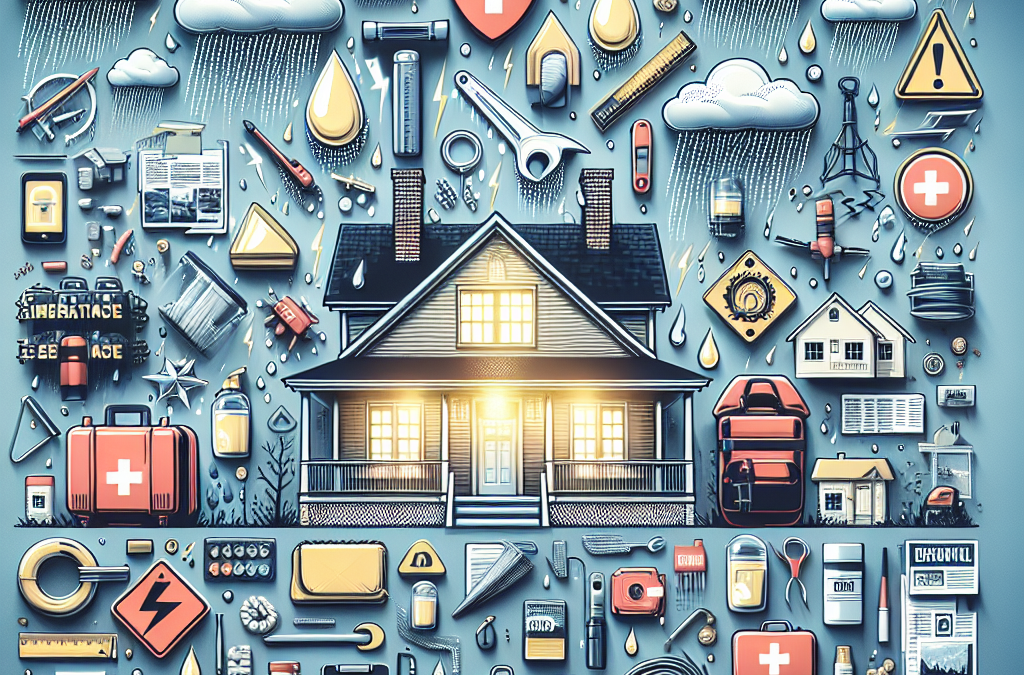Assess Your Home’s Vulnerabilities
Identify Weak Spots
One of the first steps in preparing for unexpected weather disasters is to take a good, hard look at your home. Seriously, walk around both inside and outside, checking for weak spots. Areas like old roofing, unsecured windows, and unprotected doors are a big deal. If a storm hits, they could be your home’s Achilles’ heel!
From my experience, I’ve found that even small gaps can lead to big problems. Water can sneak into places you wouldn’t even think about! I had a spot in my basement that seemed harmless until a heavy rain turned it into a small lake. Lesson learned!
Finally, don’t forget to check the landscape around your home too. Trees that are too close or unstable landscaping can become dangerous during severe winds or storms. If you see anything that looks dodgy, it’s time to act before it’s too late.
Secure Important Documents
Gather Your Essentials
Next up, make sure all your important documents are in one place. This means birth certificates, insurance policies, and any other critical papers. I know it seems tedious, but trust me, in the chaos of a disaster, you’ll want everything handy.
The ideal spot? A fireproof and waterproof safe. When I set mine up, I felt so much more at ease knowing my essentials were protected. Find a safe spot that’s accessible but also secure from potential water damage.
And hey, if you don’t have a safe, at least consider digitally backing everything up. Take clear photos and keep them in a cloud storage service. That way, even if all your physical copies are lost, you have a backup that’s just a click away!
Thank you for reading this post, don't forget to subscribe NOW for FREE!
Stock Up On Supplies
Create an Emergency Kit
One of the most crucial steps I can personally recommend is to create an emergency kit. Don’t wait until a disaster is looming over your head to realize you’re missing basic supplies. I mean, who ever wants to run out for batteries in the middle of a storm?
What should you include in your kit? Think water, non-perishable food, first aid supplies, flashlights, and hygiene products. Some people even add a comforting item, like a favorite book or game. Personally, I’ve learned that a little comfort goes a long way when you’re in a stressful situation!
And don’t forget to check your emergency kit regularly! A couple of years back, I opened mine only to find expired snacks and dead batteries. It’s a little embarrassing, but it’s definitely something I’ve fixed. Now, it’s on my checklist every six months to refresh the supplies.
Establish a Communication Plan
Stay Connected with Family
In times of crisis, staying connected is vital. It’s easy to think that we’d just figure everything out on the fly, but trust me, planned communication works wonders. I remember one time during a storm, our power went out, and it took hours to confirm where everyone was!
Make sure everyone in your household knows about your communication plan. This could mean setting up a specific rendezvous point or deciding who to contact in case of an emergency. I often carry a list of important phone numbers in my wallet for quick access.
If you have kids, sit down with them and explain why this is important. Involving them not only teaches them responsibility but also gives them peace of mind. It has worked well for us, and it’s reassuring to know my family is on the same page.
Evaluate Your Insurance Coverage
Understand Your Policy
Lastly, take a deep dive into your insurance coverage. Knowing what’s covered during a disaster is crucial! I’ve been there and found out too late that my policy had gaps. It’s no fun when you’re left hanging without the coverage you thought you had!
Contact your insurance agent and go over your policy together. Ask questions, and be sure you understand things like deductibles and coverage limits. When I did this, it really opened my eyes to what was at stake. Plus, your agent can often help you navigate your options for additional coverage if needed.
Keep a copy of your insurance policy in your emergency kit or a secure place where everyone can access it if needed. It’s one of those things that will make all the difference if disaster does strike.
FAQs
What should I do first to prepare my home for disasters?
Start by assessing your home for vulnerabilities, such as weak spots in roofing and windows. It’s all about making sure your home can withstand harsh weather.
How can I secure my important documents?
Gather your essential papers and place them in a fireproof and waterproof safe. Additionally, consider backing them up digitally in the cloud.
What supplies should be in my emergency kit?
Your emergency kit should include water, non-perishable food, first aid supplies, flashlights, batteries, and hygiene products. Regularly check to ensure everything is fresh and up to date!
How can I establish a communication plan for my family?
Decide on a rendezvous point and make sure everyone knows who to contact if separated. Discuss this plan with your family regularly to make sure everyone understands it.
Why is it important to evaluate my insurance coverage?
Knowing what your insurance covers can save you a lot of trouble after a disaster. Make sure to understand your policy and ask questions so you’re fully informed.






